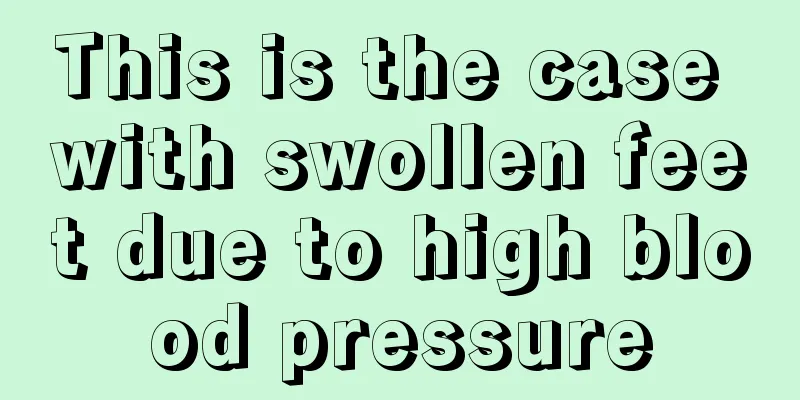What is root canal retreatment?

|
Root canal retreatment is a common medical treatment method. It can generally be used to treat diseases in the human oral cavity. Root canal retreatment can effectively treat some dental diseases and damaged cells of the tooth's root canal nerves. It can also effectively prevent tooth infection and has certain benefits for dental health. The surgical method is also very simple. Root canal retreatment Root canal therapy, also known as endodontic treatment, is a procedure in dentistry that treats pulp necrosis and root infection. This procedure preserves the tooth and thus complements tooth extraction. The surgery is complicated and usually requires 2-4 visits to complete. The patient also suffers greater pain. Tooth structure The hollow center of the tooth contains soft tissue called the pulp. The upper part of the cavity is wide, called the pulp cavity, and the lower part has a tubular root canal, through which the dental nerve and blood vessels that nourish the nerve are derived. Humans generally have 1-4 root canals per tooth, with the back teeth having the most root canals. An infection in the dental pulp can cause pain, jawbone infection, and eventually the tooth will become brittle due to the death of the dental nerve. Treatment steps Step 1: Root canal preparation Before root canal preparation, preoperative evaluation of root canal treatment, pulp chamber preparation and working length measurement are required, followed by the root canal preparation stage. There are two methods of root canal preparation, and different preparation methods are used depending on the instrument selected. When doing root canal preparation for endodontic treatment, it is important to emphasize that since the root canal system is very complex, no instrument or preparation method can reach the entire root canal system, so the combination of mechanical preparation and chemical preparation is very important. Step 2: Root canal disinfection stage During root canal treatment, experts recommend that teeth with vital pulp or infection limited to the coronal pulp can be treated with a one-time method, while others can be treated with root canal sealing medication. Step 3: Root canal filling stage During root canal treatment, when filling the root canal, it is important to grasp the timing of filling. Generally, filling can be performed when there are no subjective symptoms, no obvious percussion pain, no odor in the root canal, no exudation, and no symptoms of acute periodontitis. There is no need to wait until all symptoms disappear, nor does it necessarily have to wait for the fistula to heal completely. Repeated filling can easily cause greater irritation to the periapical region. As for filling methods, the cold gutta-percha lateral pressure method is still the mainstream, while the hot gutta-percha method is the future trend. Root canal treatment process 1. Take X-rays to determine the structure of the affected area and the surgical plan. 2. Apply local anesthesia. 3. Drill the tooth and remove the decayed tooth. 4. Open the pulp cavity and remove the necrotic pulp. 5. Use a root canal drill to enlarge the root canal. 6. Rinse the inside of the root canal with a disinfectant (such as sodium chlorate solution). 7. Fill the root canal with special materials to ensure it remains sterile for a long time. 8.Fill the holes in the teeth or install crowns. Indications 1. Pulpitis: The dental pulp becomes inflamed due to bacterial infection. The dental pulp is in a sealed pulp cavity and is generally not infected by bacteria. When the tooth has a hole due to caries and the hole is too deep, external bacteria will invade the pulp cavity and infect the pulp. 2. Apical periodontitis: After the dental pulp is infected by bacteria, the bacteria will invade the alveolar bone through the apical foramen, causing inflammation of the tissues around the root apex. As long as the infected pulp is removed, the apical inflammation will subside. 3. Exposed pulp: When a tooth is broken and the dental nerve is exposed, root canal treatment is generally required. shortcoming It may fail, and incomplete disinfection may lead to reinfection of the pulp cavity, resulting in the need for tooth extraction. In molars with 4 root canals, the fourth canal is easily missed, leading to failure. In addition, root canals with abnormal shapes may not be thoroughly disinfected and filled during the filling process. A tooth does not necessarily need to be extracted after a failed root canal treatment. Root canal therapy is still the main method for pulp and periapical disease. Therefore, people are very concerned about the effectiveness of root canal treatment, especially the reasons why some root canal treatments still fail after high-standard treatments, which have always been of great concern to doctors. The reasons can be summarized as follows: Anatomical factors, including lateral canals, accessory canals, apical divergence, and furcation; Iatrogenic factors during treatment, such as undetected lateral root canal perforation, overfilling of the root canal, poor crown sealing, and the retention of paper points and cotton twists during treatment; Microbial infection in the root canal has not been controlled, and infection outside the root canal has attracted particular attention from scholars in recent years. Currently, conservative root canal treatment is still the first choice for retreatment of root canal failure, that is, by analyzing the cause of failure, reasonable root canal treatment methods are selected, such as ultrasound, laser, microwave, etc., and drugs that are sensitive to root canal bacteria are selected to treat the root canals, and vertical hot pressure filling technology is used to fill lateral root canals and accessory root canals. When conservative treatment is ineffective, apical surgery can be considered, but the indications and contraindications must be strictly followed. The retreatment success rate for failed root canal treatment is approximately 66% for conservative treatment and 23% for failure, while the success rate for apical surgery is 59% and 19% for failure. There is no significant difference between the two. |
<<: What is the reason for stiff facial muscles and inability to smile?
>>: Symptoms and treatment of kidney yin deficiency
Recommend
Is it good for your skin if you don't wash your face in the morning?
We are all accustomed to washing our faces every ...
What are the symptoms of thyroid cancer recurrence
We may have all heard of thyroid diseases. Once t...
Fat man's inner thigh is black
If you are too fat, it will have a great impact o...
Is the big toe corrector useful?
People often find that some people have a protrud...
What are the signs and symptoms of colorectal cancer?
Our living standards are constantly improving, an...
Leg cramps after waking up
What causes leg cramps when waking up? Leg cramps...
There is a sound when the knee is raised
The noise when the knee is lifted is mainly cause...
Does thyroid gland affect childbirth
For many adults, thyroid disease is actually not ...
The efficacy and function of black cherry
Black cherries are a common fruit in daily life. ...
What is the reason for the pain in the front teeth
Front tooth pain is a very common symptom in dail...
Early symptoms of onychomycosis, be alert to these phenomena
Onychomycosis should be taken seriously by everyo...
What are the essential nutrients for the human body?
Human life requires a lot of nutrients to maintai...
What do people with teratoma eat for three meals a day
As we all know, teratoma is a kind of tumor cover...
What causes coughing and yellow phlegm?
Cough is a common disease, especially in spring a...
Can I eat Zongzi while taking Chinese medicine
People need to pay attention to many taboos when ...









